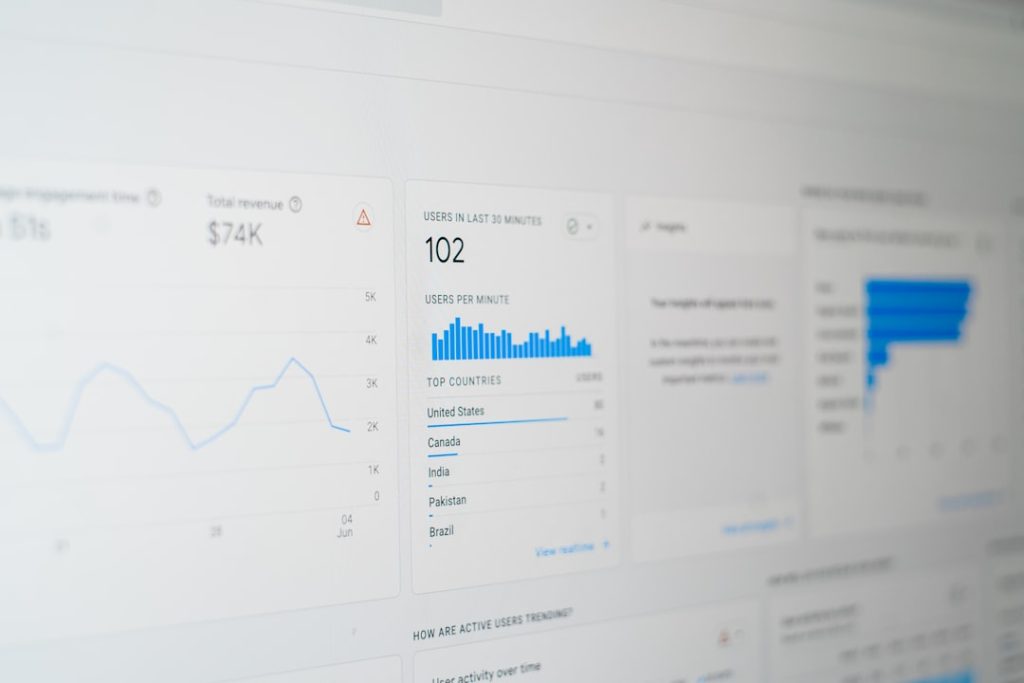Keywords and key phrases are the cornerstone of search engine optimization (SEO). They represent the terms and phrases that users input into search engines when seeking information, products, or services. Understanding the nuances of these keywords is essential for any digital marketing strategy.
For instance, a business that sells organic skincare products must identify not only broad keywords like “skincare” but also long-tail keywords such as “organic skincare for sensitive skin.” Long-tail keywords often have lower competition and can attract more targeted traffic, leading to higher conversion rates. The process of keyword research involves using various tools and techniques to uncover what potential customers are searching for. Tools like Google Keyword Planner, SEMrush, and Ahrefs can provide insights into search volume, competition, and related keywords.
Additionally, analyzing competitors’ websites can reveal valuable keywords that may have been overlooked. It’s important to consider user intent behind keywords; understanding whether users are looking for information, making a purchase, or seeking a service can help tailor content to meet their needs effectively. By strategically incorporating these keywords into website content, businesses can enhance their visibility in search engine results pages (SERPs) and attract a more relevant audience.
Key Takeaways
- Understanding keywords and key phrases is essential for effective SEO
- Creating high-quality content is crucial for engaging and retaining website visitors
- Optimizing meta tags and descriptions can improve search engine visibility
- Utilizing internal and external links can enhance website authority and credibility
- Improving website speed and mobile responsiveness is important for user experience and SEO rankings
Creating High-Quality Content
Creating high-quality content is paramount in establishing authority and trustworthiness in any niche. Content should not only be informative but also engaging and relevant to the target audience. High-quality content often includes well-researched articles, blog posts, videos, infographics, and other formats that provide value to users.
For example, a travel blog that offers detailed itineraries, personal experiences, and practical tips can significantly enhance user engagement compared to a generic travel guide. This depth of content not only keeps readers on the page longer but also encourages them to share it across their networks. Moreover, the importance of originality cannot be overstated.
Search engines prioritize unique content that offers fresh perspectives or insights. Plagiarized or duplicated content can lead to penalties from search engines, adversely affecting a website’s ranking. To ensure content quality, it’s beneficial to incorporate storytelling elements that resonate with readers emotionally.
This could involve sharing personal anecdotes or case studies that illustrate a point effectively. Additionally, using visuals such as images and videos can break up text and make the content more digestible. Ultimately, high-quality content serves as a magnet for backlinks, social shares, and organic traffic, all of which contribute positively to SEO.
Optimizing Meta Tags and Descriptions

Meta tags and descriptions play a crucial role in how search engines interpret and display web pages in search results. The title tag is one of the most important on-page SEO elements; it should accurately reflect the content of the page while incorporating primary keywords. A well-crafted title tag not only improves rankings but also influences click-through rates (CTR).
For instance, a title like “10 Essential Tips for Organic Gardening” is likely to attract clicks from users interested in gardening tips compared to a vague title like “Gardening Tips.” Meta descriptions, while not directly influencing rankings, are vital for enticing users to click on a link. A compelling meta description summarizes the page’s content in a way that encourages users to learn more. It should be concise—typically between 150-160 characters—and include relevant keywords without appearing spammy.
For example, a meta description for an article on organic gardening might read: “Discover 10 essential tips for successful organic gardening that will help you grow healthy plants naturally.” This description not only informs potential readers about the content but also incorporates keywords that align with user searches.
Utilizing Internal and External Links
| Link Type | Definition | Importance |
|---|---|---|
| Internal Link | A link that points to another page within the same website | Improves website navigation and helps distribute page authority |
| External Link | A link that points to a page on a different website | Can improve website’s authority and credibility, but should be used judiciously |
Link building is an integral part of SEO strategy, encompassing both internal and external links. Internal links connect different pages within the same website, helping search engines understand the site’s structure and hierarchy. They also enhance user experience by guiding visitors to related content.
For example, if a user is reading an article about organic gardening techniques, internal links to related topics such as pest control or soil health can keep them engaged longer on the site. This interconnectedness not only improves navigation but also distributes page authority throughout the website. External links, on the other hand, involve linking to reputable sources outside of your website.
These links can enhance credibility and provide additional value to readers by directing them to authoritative information. For instance, if an article discusses the benefits of organic gardening, linking to studies or articles from agricultural universities or recognized gardening experts can bolster the content’s reliability. However, it’s essential to ensure that external links lead to high-quality sites; linking to low-quality or irrelevant sites can harm your own site’s credibility.
Balancing internal and external linking strategies is crucial for creating a robust SEO framework that supports both user experience and search engine visibility.
Improving Website Speed and Mobile Responsiveness
Website speed is a critical factor in both user experience and SEO rankings. Research indicates that users expect web pages to load within two seconds; if a site takes longer than that, they are likely to abandon it. Slow-loading pages can lead to higher bounce rates and lower conversion rates, negatively impacting overall performance.
To improve website speed, businesses can optimize images by compressing them without sacrificing quality, leverage browser caching, and minimize HTTP requests by reducing the number of elements on a page. Mobile responsiveness is equally important in today’s digital landscape where mobile devices account for a significant portion of web traffic. A responsive design ensures that a website adapts seamlessly to various screen sizes and devices, providing an optimal viewing experience for users regardless of how they access the site.
Google prioritizes mobile-friendly websites in its ranking algorithms; thus, ensuring that your site is responsive can significantly enhance its visibility in search results. Tools like Google’s Mobile-Friendly Test can help assess how well a site performs on mobile devices and identify areas for improvement.
Utilizing Social Media and Local SEO

Social media platforms serve as powerful tools for enhancing SEO efforts by driving traffic and increasing brand awareness. Sharing high-quality content on social media channels can lead to increased engagement and shares, which indirectly boosts SEO by generating backlinks and improving visibility. For instance, a business that regularly posts informative articles or engaging videos on platforms like Facebook or Instagram can attract followers who may share this content within their networks, amplifying reach.
Local SEO is particularly crucial for businesses targeting specific geographic areas. Optimizing for local search involves claiming and optimizing Google My Business listings, ensuring consistent NAP (Name, Address, Phone Number) information across all online platforms, and encouraging customer reviews. For example, a local coffee shop can enhance its visibility by optimizing its Google My Business profile with accurate information about its location, hours of operation, and customer reviews.
This not only helps potential customers find the business easily but also improves its chances of appearing in local search results when users search for terms like “best coffee near me.”
Monitoring and Analyzing Website Performance
Monitoring and analyzing website performance is essential for understanding how well your SEO strategies are working and identifying areas for improvement. Tools like Google Analytics provide valuable insights into user behavior, traffic sources, bounce rates, and conversion rates. By regularly reviewing this data, businesses can make informed decisions about their content strategy and marketing efforts.
For instance, if analytics reveal that certain blog posts are driving significant traffic while others are underperforming, adjustments can be made to focus on topics that resonate more with the audience. Additionally, tracking keyword rankings through tools like Moz or SEMrush allows businesses to see how their targeted keywords are performing over time. This data can inform future keyword research efforts and help refine content strategies based on what is working effectively.
Regularly monitoring website performance not only aids in optimizing current strategies but also helps in setting realistic goals for future growth.
Staying Updated with SEO Trends and Best Practices
The digital landscape is constantly evolving; therefore, staying updated with SEO trends and best practices is crucial for maintaining competitive advantage. Search engines frequently update their algorithms to improve user experience and deliver more relevant results. Following industry blogs such as Moz, Search Engine Journal, or Neil Patel’s blog can provide insights into emerging trends and changes in best practices.
Participating in webinars or attending industry conferences can also be beneficial for networking with other professionals and gaining firsthand knowledge from experts in the field. Additionally, experimenting with new strategies—such as voice search optimization or video SEO—can help businesses stay ahead of the curve as consumer behavior shifts towards new technologies. By remaining adaptable and informed about the latest developments in SEO, businesses can ensure their strategies remain effective in driving traffic and achieving online success.


